By Dan Weisz
A neighbor called me on Saturday night to let me know he had seen a kingsnake feeding on a rattlesnake. You know I had to go out to check it out! He had first seen the pair around 7:00 as he was walking his dog. He watched for a while and then called me. I made it out to the spot a little before 8:00. This is what I saw- A California kingsnake wrapped around a motionless Diamondback Rattlesnake and sitting still. There was some very tight squeezing going on by the kingsnake.
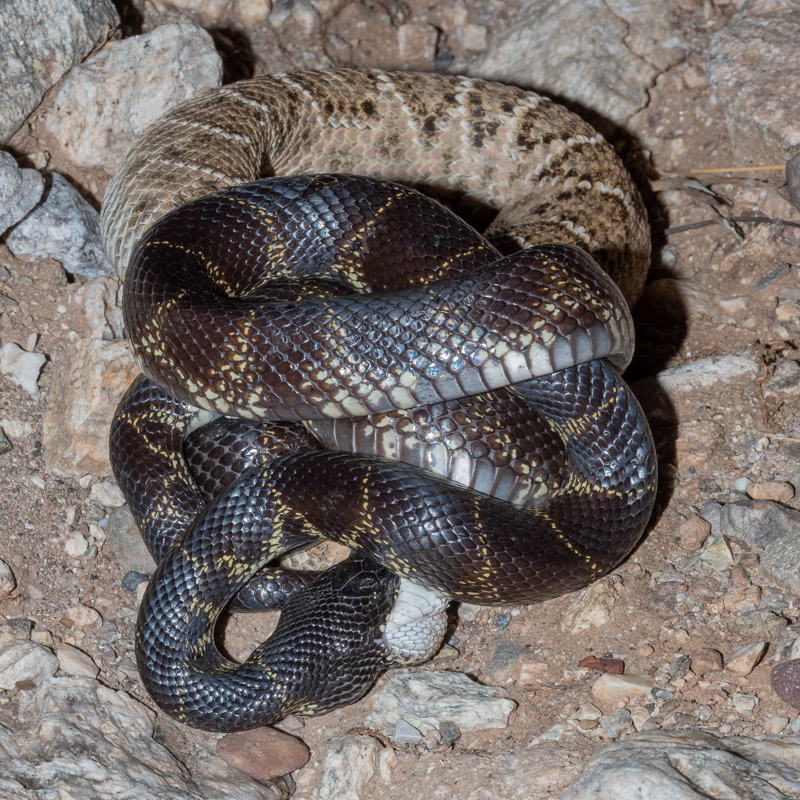
Every few minutes the kingsnake would reposition himself. It was holding the head of the rattlesnake tightly in its jaws the entire time. Kingsnakes kill their prey via constriction- they squeeze their prey to death. This particular photo reminded me of a pretzel shape (or perhaps a heart shape if you are so inclined!) About one-quarter of the diet of a California Kingsnake is comprised of rattlesnakes.
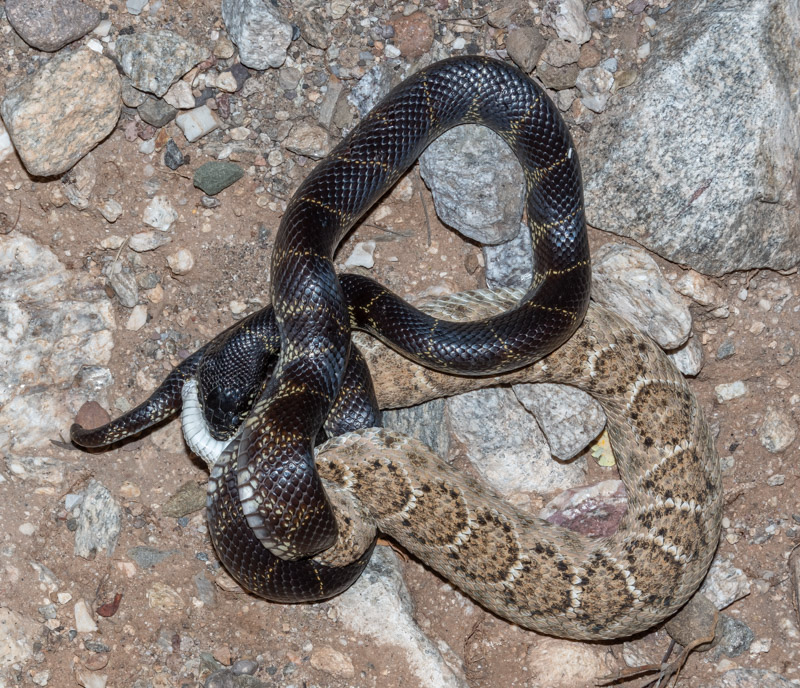
Here, you can see the kingsnake’s mouth opened wide to swallow the rattler. People think that kingsnakes and constrictors kill their prey by squeezing the lungs tightly so the prey cannot breathe. Recent research actually shows that the squeezing overwhelms the prey’s circulatory system. When blood cannot get to the brain, the animal dies very quickly due to lack of oxygen to the brain ( as well as to other vital organs).
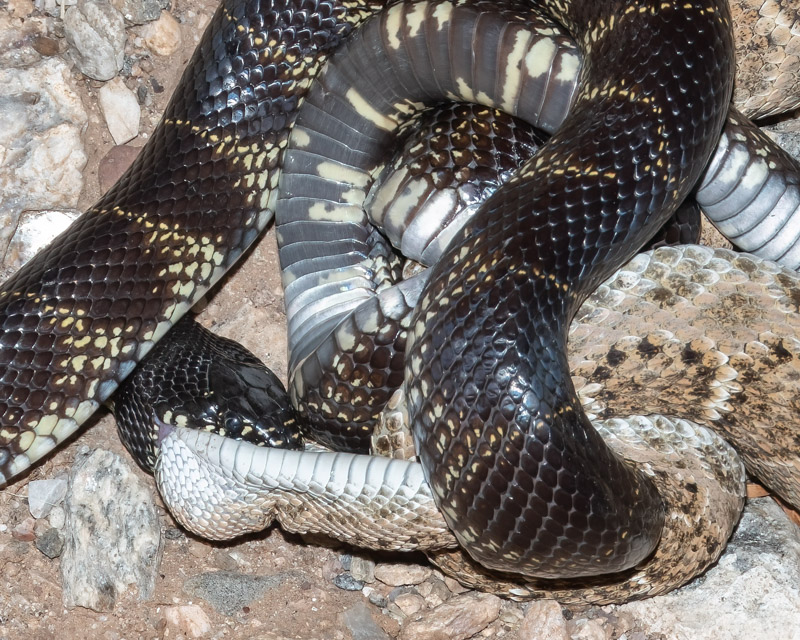
Here is a close-up of the kingsnake working to ingest the rattlesnake. The underside of the rattler is visible here. In other photos, you can see the “diamond” pattern on the back of this Diamondback Rattlesnake. Can you see the kingsnake’s eye?
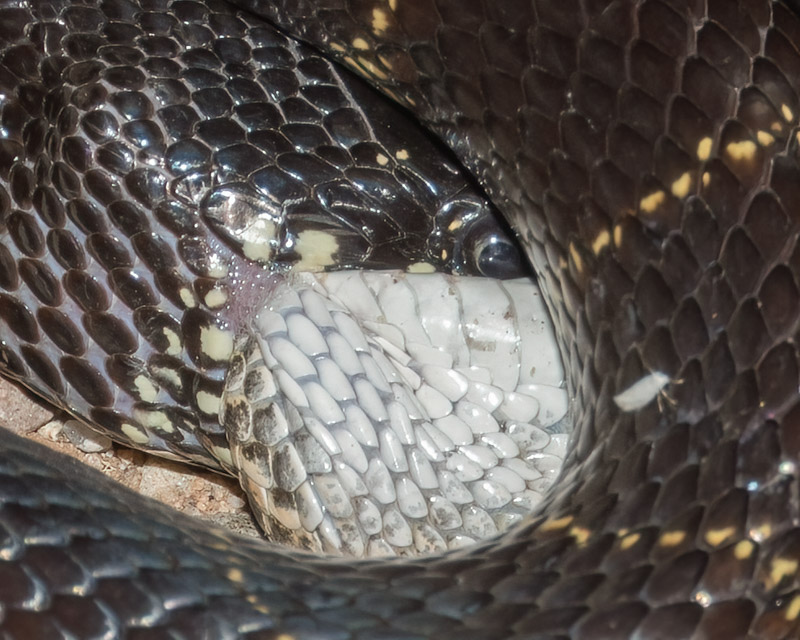
This is a knot that cannot be untied by the victim. Kingsnakes are active hunters, not ambush hunters. They seek out their prey through scent. Once they find it, they grab it with their mouths, rapidly ’tie up’ the body and start squeezing. Compared to other snakes, kingsnakes are much stronger than other species.
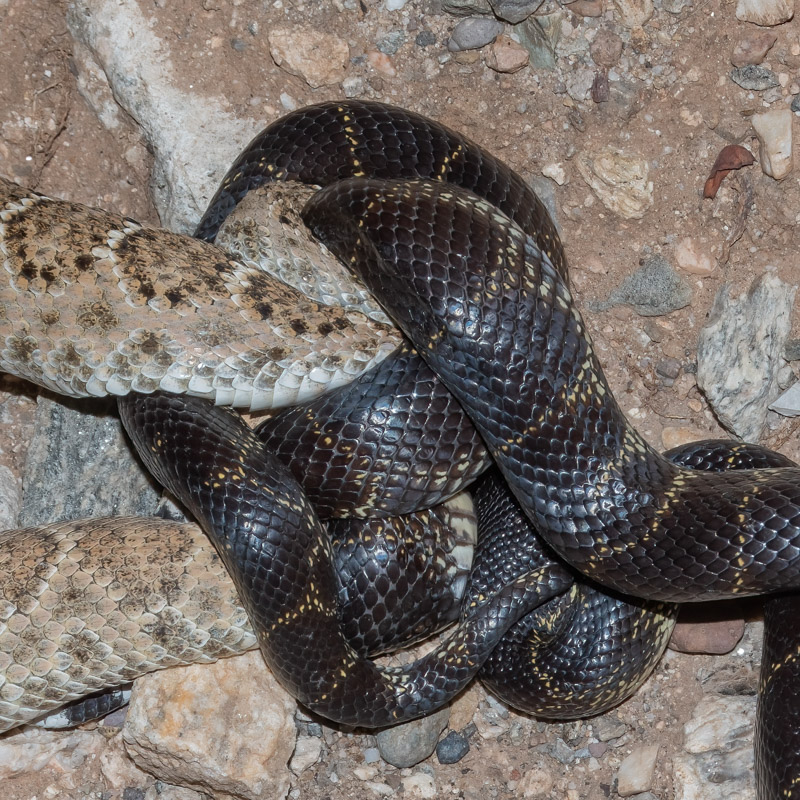
Periodically the kingsnake would shift positions while always keeping a tight grip on the motionless snake. At one point, the kingsnake brought its tail under its head and used it alongside the rattler’s body right by the kingsnake’s mouth. It looked as if it was using the tail to hold the side of the rattlesnake close to its jaw.
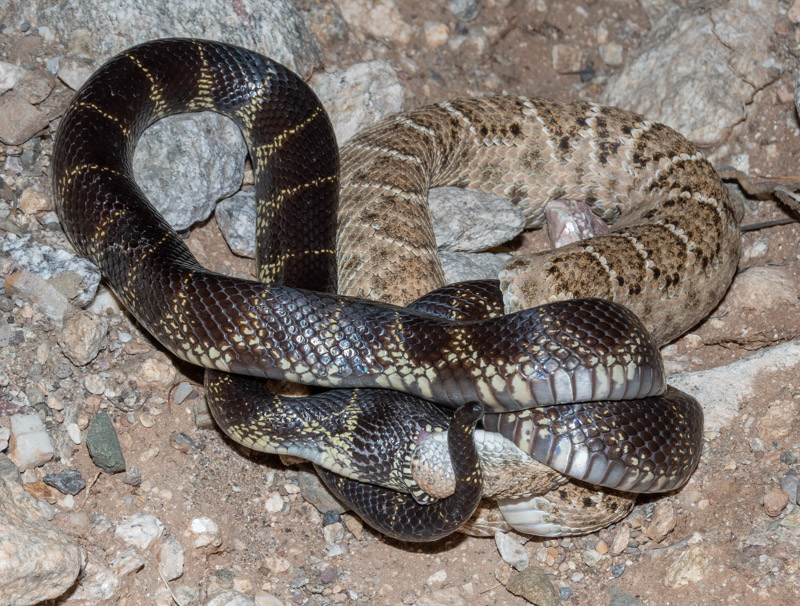
A closer look at the tail reveals some kind of tail injury. It could have happened via a mammal or bird trying to capture and eat the snake. The snake might have been clipped by a car. Who knows? …but the snake is a survivor.
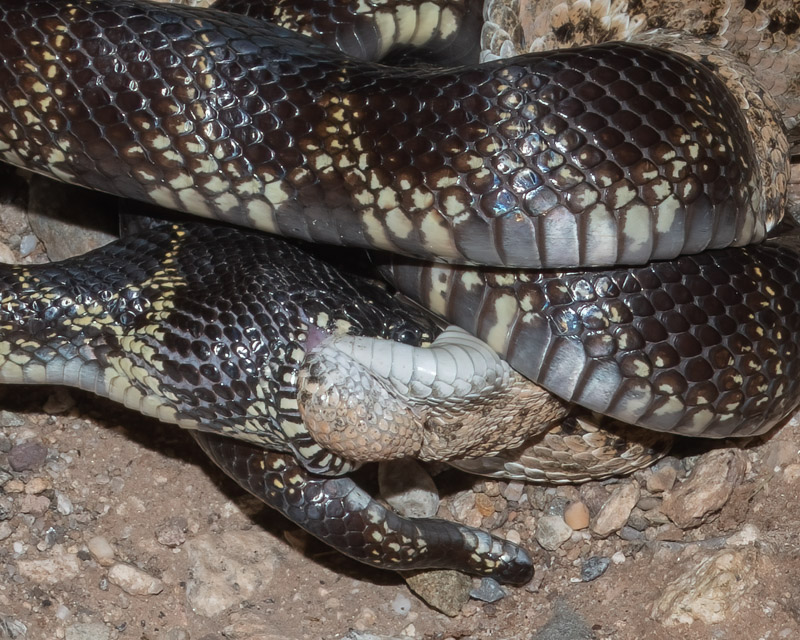
I watched this process unfold for about an hour and a half in the dark. Moths and insects were attracted to our flashlights and at one point, a spider crawled out from under the edge of the road and onto the rattler’s back. It wandered around for a bit, taking everything in. Our desert certainly is an interesting and enchanting place!
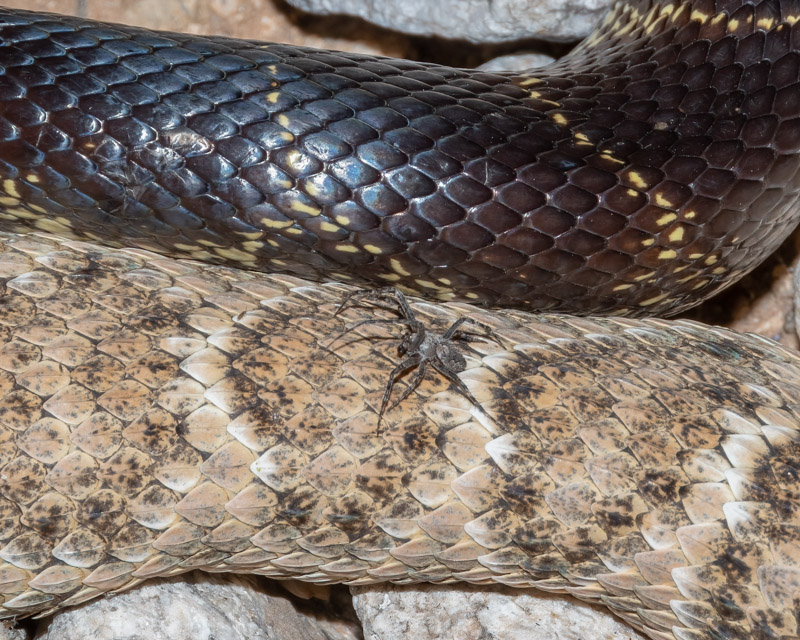
I am waiting for an ID on the spider species. All I know is that it added quite a bit of atmosphere to this surreal event.
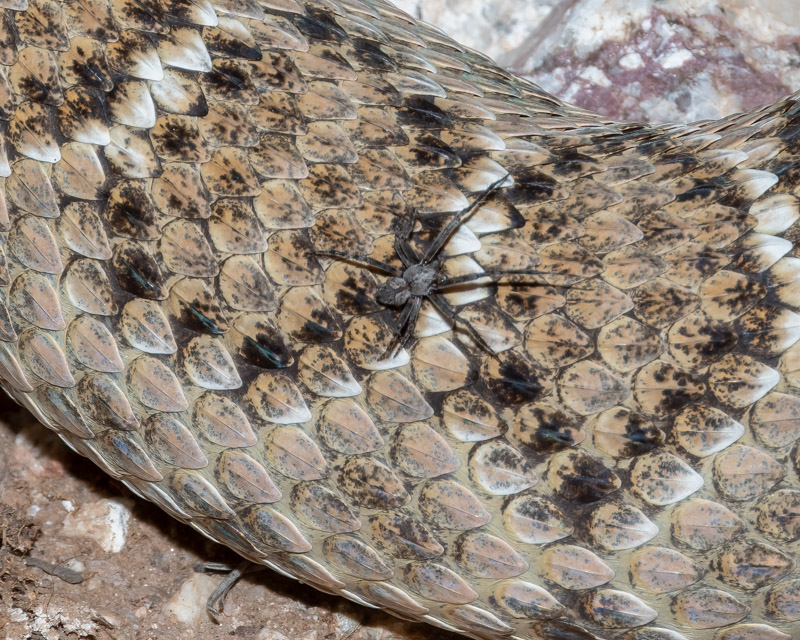
Towards the end of the hour and a half that I watched, the kingsnake began to stretch out its own body to allow for better consumption of its prey. After consuming prey this large the kingsnake will not have to eat for a very, very long time. Kingsnakes get their name because they are able to feed on other snakes, making them the King of Snakes! It was hard to estimate the length of each of these snakes because of their twisted positions. The rattlesnake did appear very much wider-bodied than the kingsnake though. Today, I went back and measured the size of the two rocks on either side of the kingsnake’s body. Each rock is 4.5 inches long The upper rock is 4” wide and the rock below the kingsnake is 2.5” wide.
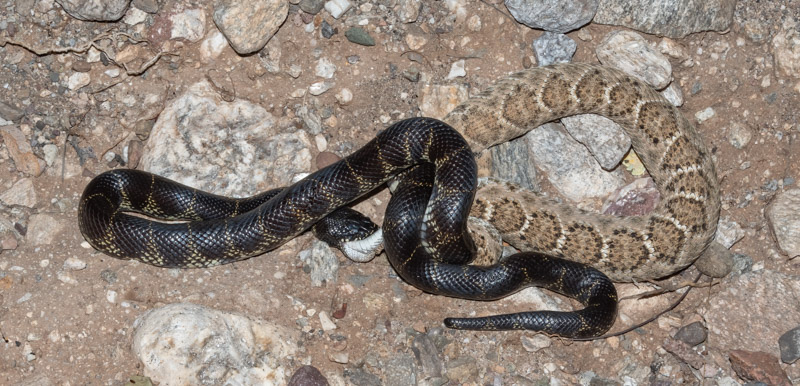
A day later, my neighbor called to let me know he had gone back out after 10:00 that night. The snakes were no longer where we had watched them. After searching, he found the snakes further up the road and hidden under some brittlebush. By then, the kingsnake was all stretched out and a little more than one foot of the rattlesnake was left showing. When I went back to look at sunrise, the kingsnake had moved on.
